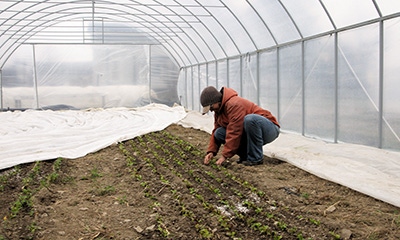May 16, 2016

Here are 11 tips for organically managing high-tunnel soil health, from Judson Reid, Cornell University Extension vegetable program specialist.
Related: High tunnel's 'tired soil' mystery solved
1. Test soil pre-season, ideally in the fall when soils are still warm
2. Obtain nutrient analysis for any compost used.
3. Apply compost or other fertility sources before planting at rates based on soil test values.
4. Test irrigation water pH and alkalinity.
5. Adjust water pH based on test results with citric acid through an injector.
6. Conduct foliar testing every two to three weeks in-season.
7. Add fertility to irrigation water, or foliar applications, based on foliar test results.

HIGH TUNNEL HEALTH: Crop production in any mini-ecosystem requires intensive management and monitoring, affirms Liz Martin of Muddy Fingers Farm. Photo: Spencer Tulis
8. Remove summer crop and debris at conclusion of season.
9. Soil test before any winter crop or cover crop.
10. Use fall irrigation to provide moisture for cover crop or winter greens.
11. Plan to move tunnel(s) for long-term precision nutrient management.
More BMP tips for high tunnels are online at http://blogs.cornell.edu/hightunnels .
Dunn writes from Mannsville, N.Y.
You May Also Like




